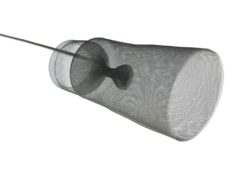
A meta-analysis—published in Circulation Cardiovascular Interventions—indicates that the routine use of an embolic protection device during percutaneous coronary intervention (PCI) in a saphenous vein graft does not provide benefit in the contemporary interventional era and may even increase the risk of periprocedural myocardial infarction. This has implications for current guidelines, which give the use of embolic protection during such procedures a Class I recommendation.
Writing in the journal, Timir K Paul (Division of Cardiology, Department of Internal Medicine, East Tennessee State University, Johnson City, USA) and others report that the routine use of embolic protection devices during saphenous graft intervention “has been questioned”. They add that this is because of conflicting results and because outcomes of saphenous graft intervention have improved in recent years due to the use of more potent antiplatelet and improved procedural techniques and stents. The explain that the original purpose of embolic protection devices was to reduce the rate of periprocedural myocardial infarction given that saphenous vein graft intervention is associated with higher distal athero-embolism, leading to no-reflow, than is native-vessel PCI.
“The objective of this meta-analysis is to compare all-cause mortality, major adverse cardiovascular events (MACE), myocardial infarction, and target-vessel revascularisation, between embolic protection device use and no-embolic protection device use in saphenous vein graft intervention,” the authors comment.
Reviewing results from eight studies, Paul et al identified 52,893 patients who had undergone saphenous vein graft intervention—of whom, 11,506 had undergone intervention with a embolic protection device and 41,387 had undergone intervention without protection. There were no significant differences between groups in the rate of all-cause mortality, MACE, target vessel revascularisation, late myocardial infarction, or periprocedural myocardial infarction.
However, the authors comment: “Surprisingly, when a fixed-effect model was used, contrary to the expected benefit of the use of embolic protection device, it was associated with 1.5-fold higher periprocedural myocardial infarction (p<0.0001) compared with no embolic protection device”. They add that because the “main goal” of embolic protection is to reduce no reflow and prevent periprocedural myocardial infarction, their results “question the necessity of routine use of embolic protection device in saphenous vein graft intervention”.
One of the studies included in the meta-analysis was the National Cardiovascular Data Registry (NCDR) CathPCI Registry study, which Paul et al note, “has the largest sample size compared with other studies and this may skew the results” of the meta-analysis. Therefore, a sensitivity analysis was performed that excluded results from this registry and showed no difference in periprocedural myocardial infarction, late myocardial infarction, and target vessel myocardial infarction between groups. “However, all-cause mortality and MACE differ significantly between the two groups favouring embolic protection device use,” the authors observe.
They conclude that further randomised controlled trials are needed in the current era to evaluate long-term outcomes with routine use of embolic protection devices and “meanwhile, current guideline recommendations on embolic protection device use should be revised”.
Paul told Cardiovascular News: “Our results show no difference in clinical outcomes whether you use embolic protection device or not in saphenous graft intervention. Therefore, routine use of embolic protection device in saphenous graft intervention may not be necessary and beneficial but may still be useful in selected higher risk patients. Until further evidence from randomised trials, current guideline recommendations should be reassessed in this regard and possibly consider downgrading to Class II”













